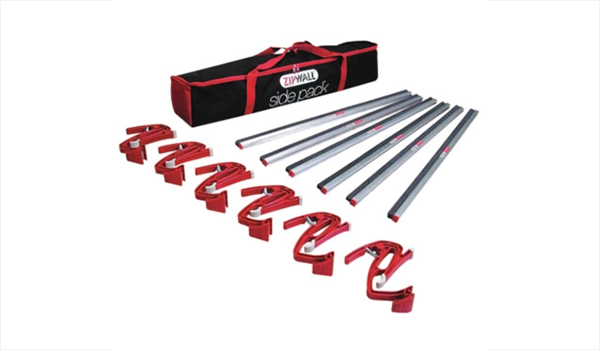
Recently I found myself in a predicament. I needed to complete a test of benchtop table saws, but our workshop was absolutely full. I got the bright idea of doing the test at my photographer’s studio & but he was less than enthusiastic about the sawdust that I would be creating. He has some lame idea that it would be bad for his $80,000 camera system.
Then I had an epiphany or at least a really good idea. I had been looking for a chance to test ZipWall’s product for some time. This was the perfect chance. I set up a ZipWall room at the photographer’s studio, and between their dust barrier system and a JET dust collector, hardly a spec of sawdust was to be seen in the studio.
And I have to say that I was very impressed with the ZipWall products. The spring-loaded poles that lifted the clear plastic wall up to the ceiling were easy to use. The clamping devices which captured the plastic at the end of the poles were intuitive to use (I didn’t read the directions until after I had set it up & I’m a guy, OK?) and remarkably effective. I was able to set up my plastic room in very short order. Then I installed two zippers on one of the walls (they have peel-and-stick adhesive that attaches to the plastic) and I had a doorway wide enough to roll my saws in and out with no problem.
The basic system which I used costs about $100.00. I could easily see using it in a workshop. Set it up when sanding or finishing either to keep dust in or out of a defined area. And, of course, its main purpose of isolating construction areas in a home is a viable idea for all of us woodworkers whose projects eventually get mounted or installed in our homes. You can find a source near you by going to the ZipWall web site at www.zipwall.com.





